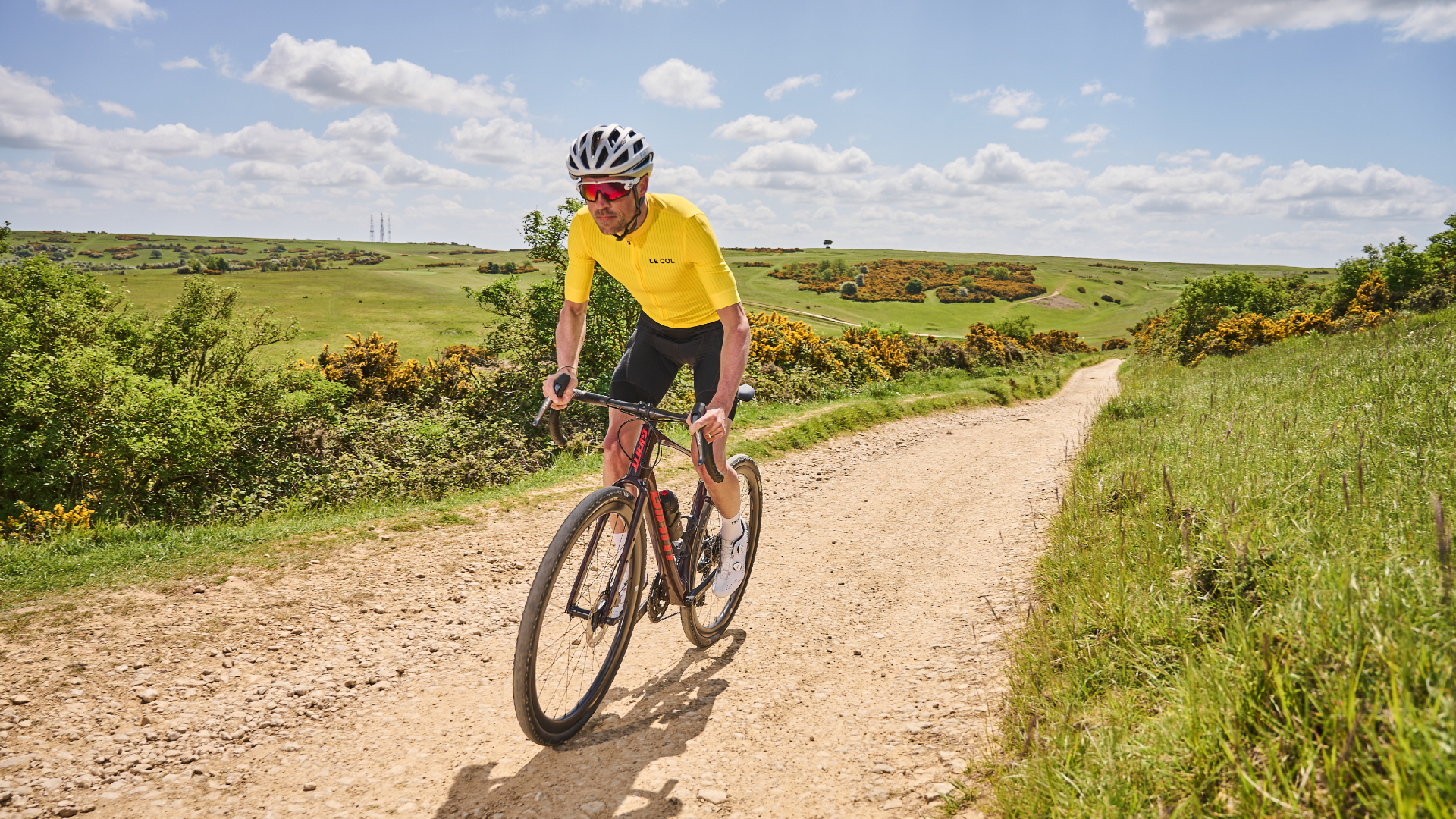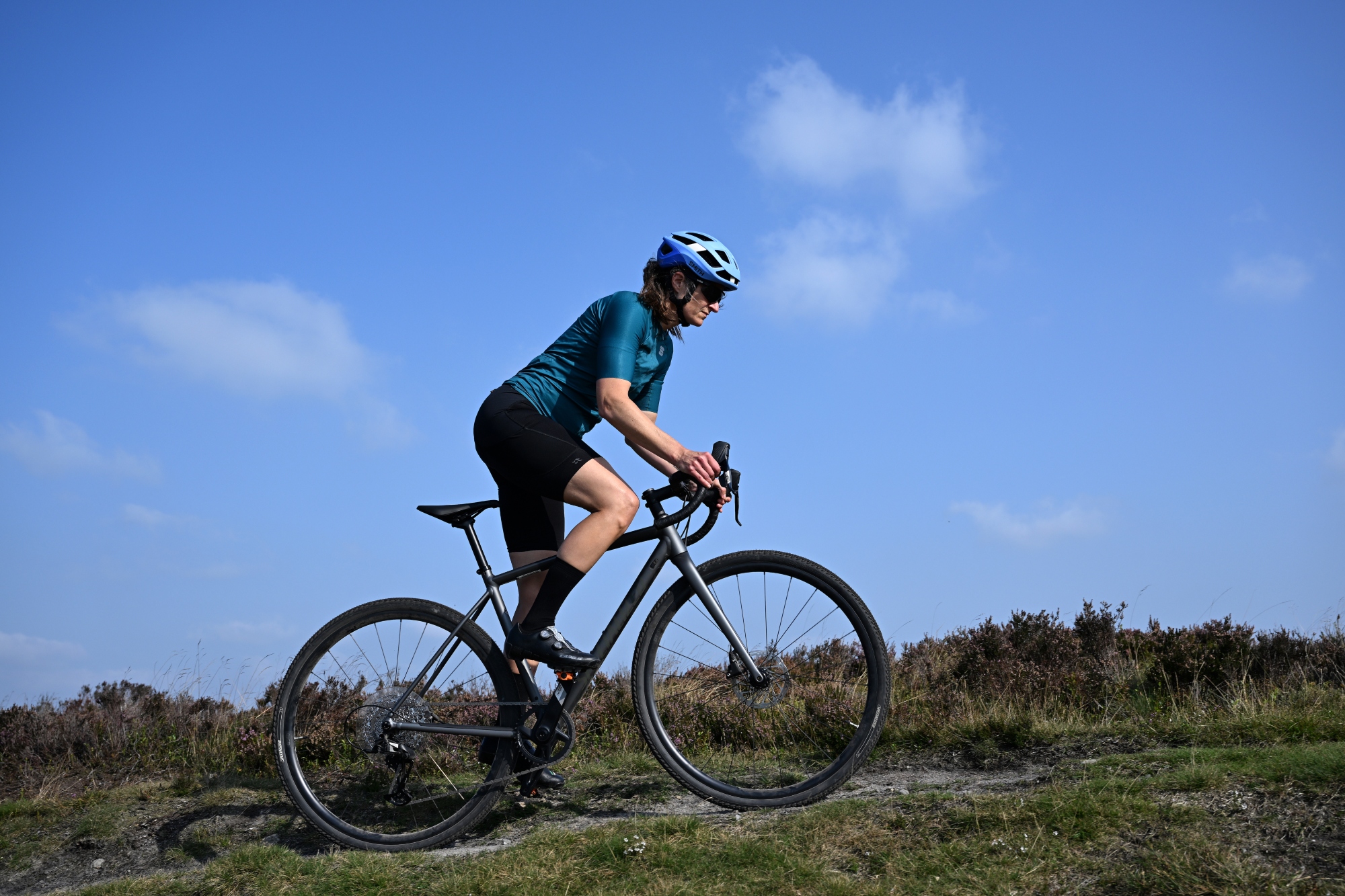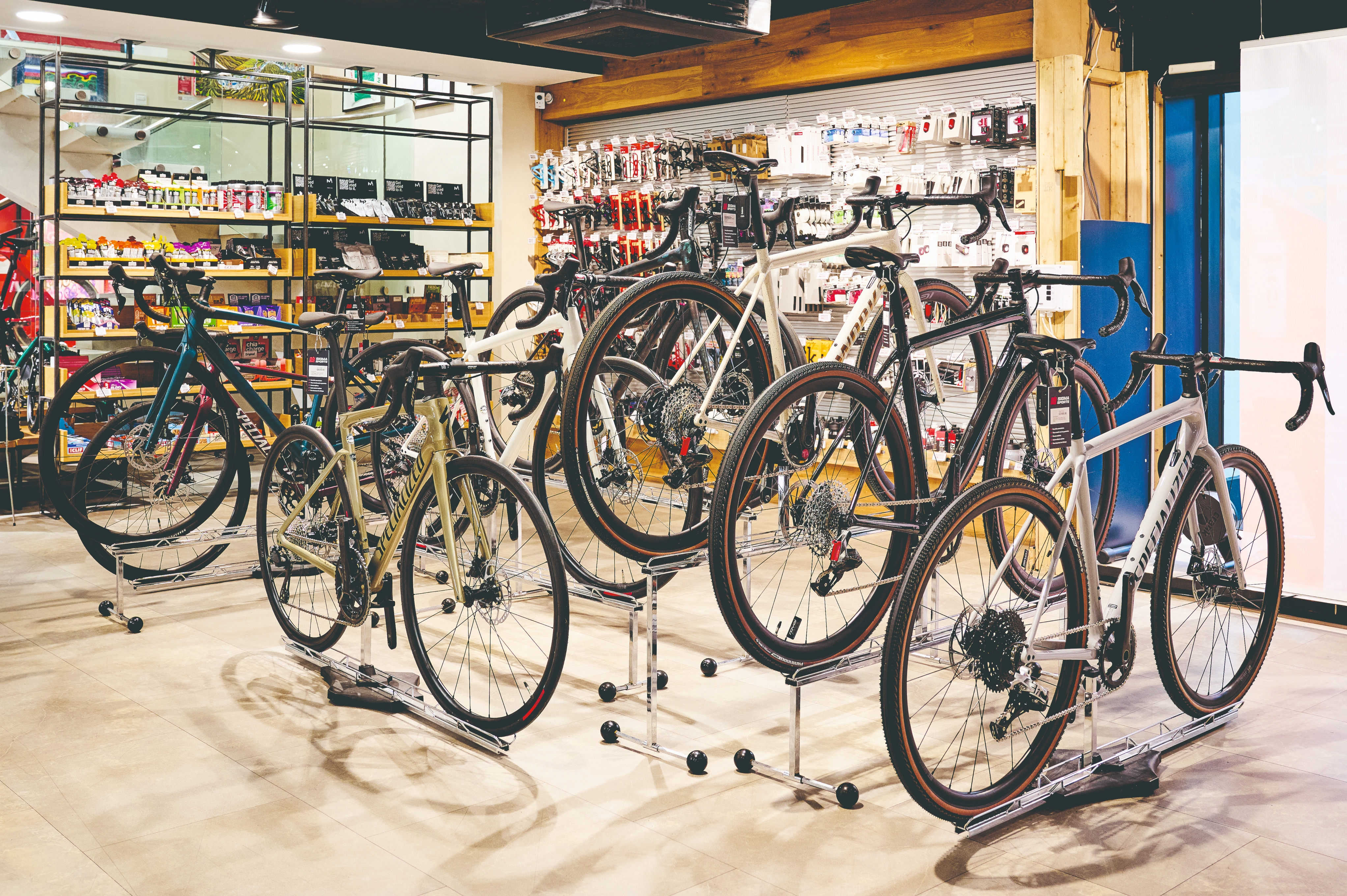Gravel came from the US - has it found its way in the UK yet?
Gravel bikes have surged in popularity since their arrival from the US in the 2010s, but can they really challenge our road riding tradition? James Shrubsall investigates


There are road bikes and there are mountain bikes, and never the twain shall meet. A decade or so ago, that may as well have been the governing mantra for cycling in the UK. Sure, there were plenty of road riders with a mountain bike in the shed for winter cross training and mufti days, and even a sizeable body of mountain bikers who would shame-facedly admit, if pushed, to owning a road bike “just for commuting”. We were stolidly one or the other. But then gravel happened.
It came to the UK, like so many things, from across the pond [read our guide to the origins of gravel, here, with contributions from our US editor]. This fatter tyred road bike, which at first few could differentiate from a cyclocross machine, bemused many of us, at least to begin with. After all, the UK experience of off-road riding tended to be rather different to the images of long, straight, dusty doubletrack stretching towards big horizons filtering in from the States.
Gravel gets rolling

“Nobody can get them, and once they do they don’t know what to do with them,” I was told by one supplier in 2020 at the height of the lockdown bike drought. And if I had a pound for every time I’ve heard gravel bikes called a fad, I could probably buy an entire set of bikepacking luggage. It wasn’t surprising to hear this charge levelled at these new machines, which seemed at once so familiar and yet, with their 40mm-plus tyres, so alien. Many of us weren’t even sure what they were called. Were they adventure bikes, gravel bikes, or were they both? And what the hell was the difference?
Over the past four years, we have become far more au fait with these new bikes, with every major road bike manufacturer – including brands such as Bianchi and Colnago who have traditionally supplied high-end road race bikes – offering a gravel bike. Many even offer more than one line of such machines. According to the Bicycle Association – which collects sales data from bike shops and online retailers – in the 12 months to the end of July 2024, about 30,000 gravel bikes were sold in the UK, up 15% on the same period in 2022-23 and up 284% versus the same period pre-Covid. How times have changed.
For so long, the road market was led by professional road racing. As recently as 15 years ago, even budget road bikes were often supplied with a full-sized chainset and a titchy ‘25’ at the back, and running pencil-strip 23mm tyres. Invariably the top tube bore the name of a Tour de France climb. No wonder many riders found these bikes intimidating and opted instead for a friendlier hybrid or hardtail mountain bike.
Manufacturers and buyers made the first step away from this racing-dictated paradigm in the late Noughties with compact chainsets, bigger sprockets and then later, as disc brakes allowed, ever wider tyres. Gravel-type bikes had in fact been available on the British market for some time – Genesis first launched the Croix de Fer in 2008, albeit marketed as an adventure touring machine - but the momentum was steadily growing. Now gravel riding and bikepacking is a market all of its own.
A growing sector

“It’s had a massive impact on the types, and the mixture, of bikes we sell,” says Adam Cross, sales manager at Pauls Cycles in Dereham, Norfolk, UK. “We’ve found that gravel, combined with e-mountain bikes, are massive growth areas for us, in line with each other.” Given that Cross was already a dedicated gravel rider – he has ridden every edition of the Dirty Reiver event – Pauls Cycles was poised and ready when the new genre began to take off.
The latest race content, interviews, features, reviews and expert buying guides, direct to your inbox!
“Personally, I always thought it was going to be massive,” he said. “I guess we jumped on it and just went for it.” Pauls Cycles was good enough to give us an insight into some of its gravel-related sales data, revealing that its gravel bike sales had increased 110% in the past year, while road bike sales had fallen 45%. Ribble Cycles, one of Britain’s biggest bike brands these days, is also investing heavily into developing its gravel offerings. Commercial director David Stacey told Cycling Weekly: “Gravel is a really significant part of our range, with its own dedicated platform covering all materials from carbon, titanium, steel and alloy. We have been at the forefront of making the discipline more accessible too, and have models in our range that cover various price points.”
Once a roadie
Not everyone is convinced by the new trend towards gravel riding. Amateur rider Ian Brookes, 40, originally from the UK's Midlands but now living in the USA, tried gravel riding but wasn’t convinced.
“It’s got big worldwide, but the UK isn’t really good for gravel riding,” he says. “The UK is great for mountain biking; it’s great for social family rides along the canal with the kids, that kind of stuff. And it’s great for roads – we’ve got some of the best.”
For Brookes, there is only a narrow habitat in which gravel bikes excel and outperform a road bike or a mountain bike. He would rather not compromise. “There’s a very tight window before you need something other than a gravel bike,” he says, “and that frustration is what made me think, you know what, I’ve only got so many hours a week to spend on the bike. Do I really want to be struggling on a gravel bike, or do I just want to go and open up the taps on a road bike?” Brookes answers his own question. “For me, it’s the sensation of going quick, on a road, no cars, going through-and-off doing 25mph – you can’t beat it really.”
This situation is echoed at Liphook Cycles in Hampshire, UK, where shop owner Trevor Beauchamp told us that sales of gravel bikes well outstripped those of road machines and had become his own machine of choice. “Personally, as a guy who is getting on a bit now” – he is 60, he told us – “the days of flat-down road bikes are probably not over entirely, but you know, you want a bit more comfort. I think a gravel bike with a longer head tube and fatter tyres is going to make sense,” he said. Beauchamp echoes the views of other riders CW heard from, with the poor state of Britain’s roads often being singled out as a strong push factor towards the gravel genre.
The added comfort and durability make a gravel bike ideal for commuting day-in, day-out often in poor weather on rough surfaces. It makes sense to be on something a little more rugged and predictable than your skittish ‘Sunday best’ road bike. Perhaps the biggest driver towards this new style of riding is the discomfort – fear, even – that many riders feel when sharing the roads with cars and trucks that are only growing bigger and more numerous.
Safety and freedom
“I’d had a number of incidents on the road that put me off,” says Douglas Jaram, who has become a fully signed up gravel rider. A passing driver’s ill-advised overtake was the last straw. “It’s a common theme, we just seem to be a soft target,” he says. Jaram began gravel riding on a Genesis Datum he had originally bought for winter training. “I started riding on the local trails, and thought, why the hell don’t I just do more of this?” he smiles. “I just went further and further afield. It was the perfect mix of being able to get away from the traffic while still being able to go from A to B – with gravel, the trail starts from your front door.”
The World Tour's gravel renegade

Sometimes the WorldTour throws up a surprise – and other times it throws a mind-bending curveball. In a twist that would have been unimaginable 15 years ago, top-fl ight pro team EF Education expanded its horizons to the point where it now pays Aussie rider Lachlan Morton to ride UK bikepacking events.
The team’s willingness to help its riders create interesting stories in the gravel realm away from pro road riding speaks volumes about how inspirational this new genre can look. Morton, 32, has ridden two Grand Tours, but it’s his winning ride in the 2019 GBduro – Land’s End to John o’ Groats in less than five days – that he refers to as “the most incredible experience of my life”.
Morton last rode in the WorldTour in 2021, and has spent the past three seasons riding gravel, registering a win in the recent Unbound event. “What started as a road calendar with some ‘alternative’ events thrown in has slowly developed into something else entirely,” he wrote on Instagram after that victory in June.” I don’t think @jvaughters would have imagined where we’d end up when he identified me at the 15-16 USA National Championship. We didn’t win the Tour de France but it’s been more interesting, in my opinion.”
Jaram also welcomed the change in mindset. “When you upload a gravel ride to Strava, people aren’t interested in your average speed – it’s about where you’ve been.”
Midlands rider David Hazleton has a similar story to tell. He originally alternated between road riding, mountain biking and running, but his interest was piqued by the emerging gravel trend, and eight years ago he sold a mountain bike to buy his Boardman adventure bike. “I didn’t know anyone else with one,” he says, “but gradually they became more and more popular.” Like Jaram, he enjoys being able to pair the go-anywhere spirit of the mountain bike with the go-as-far-as-you-like attitude of the road bike, and has done a number of century rides on gravel with his local group. “I do love the fact that on the gravel bike you can still ride road quite quickly,” he says. “I still do have a road bike, but it’s 30 years old,” he adds
Future trends
While some may still view gravel riding as a fad, it looks here to stay. The gravel scene in the US is already big, and growing fast. Will the UK follow suit? “I think we’d be foolish to think otherwise,” says retailer Adam Cross. “It’s certainly a massive part of our forward orders and planning for next year.” So is that it now, gravel all the way? Ribble’s David Stacey predicts a “maturation” in the genre. “As within road and MTB – think crit racing vs sportives, downhill vs XC – it’s likely that gravel will continue to specialise and define its sub-disciplines,” he says. “Mass-participation gravel events are likely to balloon in popularity and the local scene will continue to strengthen.”
Fragmentation within the gravel genre is not hard to envisage. For many, the versatility of a gravel machine that’s fast on the road remains very attractive. But manufacturers are also pushing the all-terrain end of the spectrum, with bikes such as Giant’s Revolt featuring a suspension fork and enough beef to tackle anything short of an MTB downhill run. Part of the beauty of the gravel riding ‘club’ is that you can join it on just about any bike you like. Old-school hardtails fitted with drop-bars are not uncommon, and this newest take on the gravel bike is close to closing that circle. Wherever it all heads, you can be sure it’ll be somewhere wild, interesting and away from the traffic, mostly with a smile.
After cutting his teeth on local and national newspapers, James began at Cycling Weekly as a sub-editor in 2000 when the current office was literally all fields.
Eventually becoming chief sub-editor, in 2016 he switched to the job of full-time writer, and covers news, racing and features.
He has worked at a variety of races, from the Classics to the Giro d'Italia – and this year will be his seventh Tour de France.
A lifelong cyclist and cycling fan, James's racing days (and most of his fitness) are now behind him. But he still rides regularly, both on the road and on the gravelly stuff.
